India, a country with over a billion people, faces a significant challenge in providing comprehensive health care. The health care in India is a complex mix of public and private services, aiming to cater to diverse needs. As we delve into the intricacies of the health care system in India, it is vital to understand the role of different sectors and the unique solutions they offer. This journey through the Indian healthcare landscape will reveal the historical evolution, status, and the innovative approaches being implemented. Bajaj Finserv Doctor Loan offers to support medical professionals in expanding their practice, ensuring they can contribute effectively to this vast and dynamic system.
What is healthcare?
Health care refers to the organised provision of medical care to individuals or communities. It encompasses a wide range of services aimed at promoting, maintaining, or restoring health. In India, the health care system includes preventive, promotive, curative, and rehabilitating services. The goal is to deliver accessible and affordable health care to all citizens. However, the quality and reach of these services can vary significantly between urban and rural areas. Understanding the components of health care in India helps in identifying the strengths and weaknesses of the system and devising strategies for improvement.
History of healthcare
The history of health care in India dates to ancient times with the ayurvedic system of medicine. Over the centuries, various systems like Unani, Siddha, and allopathy have also become part of the Indian healthcare landscape. During the British era, modern medical practices were introduced, laying the foundation for the current health care system. Post-independence, India has seen significant developments, including the establishment of medical colleges and the expansion of health infrastructure. This evolution highlights the rich and diverse heritage of Indian health care and its continuous adaptation to changing needs.
Challenges to healthcare in India
India's health care system faces numerous challenges that hinder its effectiveness. These challenges include:
- Infrastructure gaps: There is a significant disparity in the availability of health care facilities between urban and rural areas.
- Shortage of healthcare professionals: India faces a shortage of doctors, nurses, and other healthcare professionals, impacting service delivery.
- Financial constraints: Many individuals cannot afford quality health care due to high out-of-pocket expenses.
- Access to medicines: The availability and affordability of essential medicines remain a challenge in many parts of the country.
Addressing these issues requires a concerted effort from both the public and private sectors. The value-based healthcare approach is one such solution that can enhance the quality and efficiency of health care services.
Types of healthcare in India
The Indian health care system can be broadly categorised into three types:
Type |
Description |
Public healthcare |
Managed by the government, offering free or low-cost services, focusing on primary and secondary care. |
Private healthcare |
Run by private entities, providing advanced and specialised care, usually at a higher cost. |
Traditional systems |
Includes ayurveda, unani, and siddha, which are popular for their holistic and natural treatment approaches. |
These categories reflect the diversity of health care options available in India, catering to different needs and preferences.
What is the health care status of India?
Currently, India's health care status is a mix of progress and persistent challenges. On one hand, there have been significant advancements in medical technology and the expansion of health care infrastructure. On the other hand, issues like unequal access, affordability, and quality of care continue to plague the system. Several initiatives, such as the National Health Mission and Ayushman Bharat, aim to address these gaps and improve overall health outcomes. Exploring various sources of healthcare finance can also provide the necessary support for enhancing service delivery.
Conclusion
The health care system in India is vast and multifaceted, with unique challenges and opportunities. Addressing these challenges requires innovative solutions and strong support for healthcare professionals. Bajaj Finserv Doctor Loan offers financial assistance to medical practitioners, enabling them to expand their services and contribute effectively to the health care system. By leveraging such resources, we can work towards a healthier India, where quality health care is accessible to all.









 Food & Beverages
Food & Beverages Grocery
Grocery Fashion
Fashion Beauty & Personal Care
Beauty & Personal Care Health & Wellness
Health & Wellness Home & Kitchen
Home & Kitchen
 Wallet
Wallet
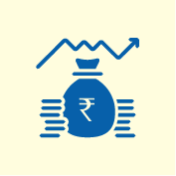 Loan Against Shares
Loan Against Shares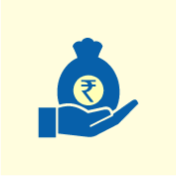 Loan Against Mutual Funds
Loan Against Mutual Funds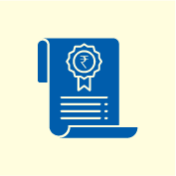 Loan Against Bonds
Loan Against Bonds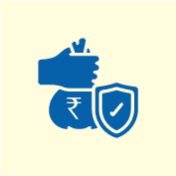 Loan Against Insurance Policy
Loan Against Insurance Policy ESOP Financing
ESOP Financing Easy EMI Loan
Easy EMI Loan Two-wheeler Loan
Two-wheeler Loan Loan for Lawyer
Loan for Lawyer Industrial Equipment Finance
Industrial Equipment Finance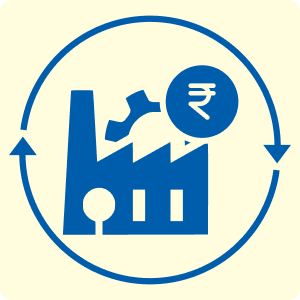 Industrial Equipment Balance Transfer
Industrial Equipment Balance Transfer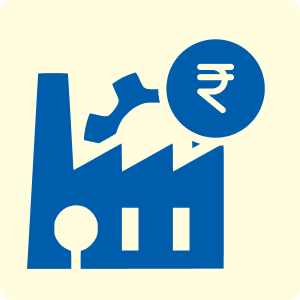 Industrial Equipment Refinance
Industrial Equipment Refinance Personal Loan Branch Locator
Personal Loan Branch Locator
 Smartphones
Smartphones Air Conditioner
Air Conditioner Led TVs
Led TVs Air Coolers
Air Coolers Refrigerators
Refrigerators Washing Machines
Washing Machines Laptops
Laptops

 Trading Account
Trading Account Open Demat Account
Open Demat Account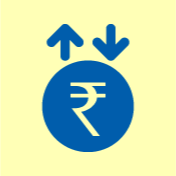 Margin Trading Financing
Margin Trading Financing Share Market
Share Market Invest in IPO
Invest in IPO All stocks
All stocks Top gainers
Top gainers Top losers
Top losers 52 week high
52 week high 52 week low
52 week low Loan against shares
Loan against shares
 Business Loan
Business Loan Secured Business Loan
Secured Business Loan Loan against property
Loan against property Loans against property balance transfer
Loans against property balance transfer Loan against shares
Loan against shares Home Loan
Home Loan Loans against mutual funds
Loans against mutual funds Loan against bonds
Loan against bonds Loan against insurance policy
Loan against insurance policy
 Term Life Insurance
Term Life Insurance ULIP Plan
ULIP Plan Savings Plan
Savings Plan Family Insurance
Family Insurance Senior Citizen Health Insurance
Senior Citizen Health Insurance Critical Illness Insurance
Critical Illness Insurance Child Health Insurance
Child Health Insurance Pregnancy and Maternity Health Insurance
Pregnancy and Maternity Health Insurance Individual Health Insurance
Individual Health Insurance Low Income Health Insurance
Low Income Health Insurance Student Health Insurance
Student Health Insurance Group Health Insurance
Group Health Insurance Retirement Plans
Retirement Plans Child Plans
Child Plans Investment Plans
Investment Plans
 Apply for Gold Loan
Apply for Gold Loan Transfer your Gold Loan with Us
Transfer your Gold Loan with Us Gold Loan Branch Locator
Gold Loan Branch Locator
 ULIP Plan
ULIP Plan Savings Plan
Savings Plan Retirement Plans
Retirement Plans Child Plans
Child Plans Free Demat Account
Free Demat Account Invest in Stocks
Invest in Stocks Invest in IPO
Invest in IPO Margin Trading Facility
Margin Trading Facility Fixed Deposit Branch Locator
Fixed Deposit Branch Locator
 Get Bajaj Prime
Get Bajaj Prime
 Bike
Bike Scooter
Scooter Electric Vehicle
Electric Vehicle Best Sellers
Best Sellers Popular Brands
Popular Brands
 Check your Credit Score
Check your Credit Score
 Engagement Zone
Engagement Zone Game Zone
Game Zone
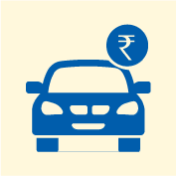 New Car Loan
New Car Loan Used Car Loan
Used Car Loan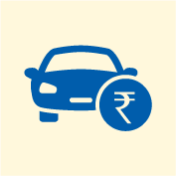 Loan Against Car
Loan Against Car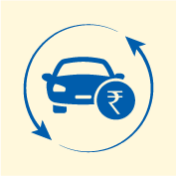 Car Loan Balance Transfer and Top-up
Car Loan Balance Transfer and Top-up
 Mobiles and Electronics on Easy EMI
Mobiles and Electronics on Easy EMI
 Personal Loan EMI Calculator
Personal Loan EMI Calculator Personal Loan Eligibility Calculator
Personal Loan Eligibility Calculator Home Loan EMI Calculator
Home Loan EMI Calculator Home Loan Eligibility Calculator
Home Loan Eligibility Calculator Good & Service Tax (GST) Calculator
Good & Service Tax (GST) Calculator Flexi Day Wise Interest Calculator
Flexi Day Wise Interest Calculator Flexi Transaction Calculator
Flexi Transaction Calculator Secured Business Loan Eligibility Calculator
Secured Business Loan Eligibility Calculator Fixed Deposits Interest Calculator
Fixed Deposits Interest Calculator Two wheeler Loan EMI Calculator
Two wheeler Loan EMI Calculator New Car Loan EMI Calculator
New Car Loan EMI Calculator Used Car Loan EMI Calculator
Used Car Loan EMI Calculator All Calculator
All Calculator
 Hot Deals
Hot Deals Clearance Sale
Clearance Sale Kitchen Appliances
Kitchen Appliances Tyres
Tyres Camera & Accessories
Camera & Accessories Mattresses
Mattresses Furniture
Furniture Watches
Watches Music & Audio
Music & Audio Cycles
Cycles Mixer & Grinder
Mixer & Grinder Luggage & Travel
Luggage & Travel Fitness Equipment
Fitness Equipment Fans
Fans
 Personal Loan for Doctors
Personal Loan for Doctors Business loan for Doctors
Business loan for Doctors Medical Equipment Finance
Medical Equipment Finance Secured Business Loan
Secured Business Loan Loan against property
Loan against property Loan against share
Loan against share Gold Loan
Gold Loan Home Loan
Home Loan
 Smartphones
Smartphones Air Conditioners
Air Conditioners LED TVs
LED TVs Air Coolers
Air Coolers Refrigerators
Refrigerators Washing Machines
Washing Machines Laptops
Laptops Water Purifiers
Water Purifiers Tablets
Tablets Kitchen Appliances
Kitchen Appliances Mattresses
Mattresses Furniture
Furniture Music and Audio
Music and Audio Cameras & Accessories
Cameras & Accessories Cycle
Cycle Watches
Watches Tyres
Tyres Luggage & Travel
Luggage & Travel Fitness Equipment
Fitness Equipment Tractor
Tractor
 Home Loan
Home Loan Transfer your existing Home loan
Transfer your existing Home loan Loan against Property
Loan against Property Home Loan for Salaried
Home Loan for Salaried Home loan for self employed
Home loan for self employed Home Loan EMI Calculator
Home Loan EMI Calculator Home Loan eligibility calculator
Home Loan eligibility calculator Home Loan balance transfer
Home Loan balance transfer
 Easy EMI
Easy EMI Offer World
Offer World 1 EMI OFF
1 EMI OFF New Launches
New Launches Zero Down Payment
Zero Down Payment Clearance Sale
Clearance Sale Bajaj Mall Sale
Bajaj Mall Sale
 Articles
Articles
 Overdue Payments
Overdue Payments Other Payments
Other Payments
 Document Center
Document Center Bank details & Documents
Bank details & Documents Tax Invoice Certificate
Tax Invoice Certificate
 Do Not Call Service
Do Not Call Service
 Your Orders
Your Orders Hamara Mall Orders
Hamara Mall Orders

 Fixed Deposit (IFA) Partner
Fixed Deposit (IFA) Partner Loan (DSA) Partner
Loan (DSA) Partner Debt Management Partner
Debt Management Partner EMI Network Partner
EMI Network Partner Become a Merchant
Become a Merchant Partner Sign-in
Partner Sign-in
 Food & Shopping
Food & Shopping Credit Card Hub
Credit Card Hub ULIP Plans
ULIP Plans Top Gainers Stock
Top Gainers Stock Top Losers Stock
Top Losers Stock Saving Plan
Saving Plan Term Insurance
Term Insurance Easy EMI Loan
Easy EMI Loan Senior Citizen Health Insurance
Senior Citizen Health Insurance Critical Illness Insurance
Critical Illness Insurance Digi Sarkar
Digi Sarkar Faster, Easier Gold Loan
Faster, Easier Gold Loan
 Live Videos
Live Videos

























